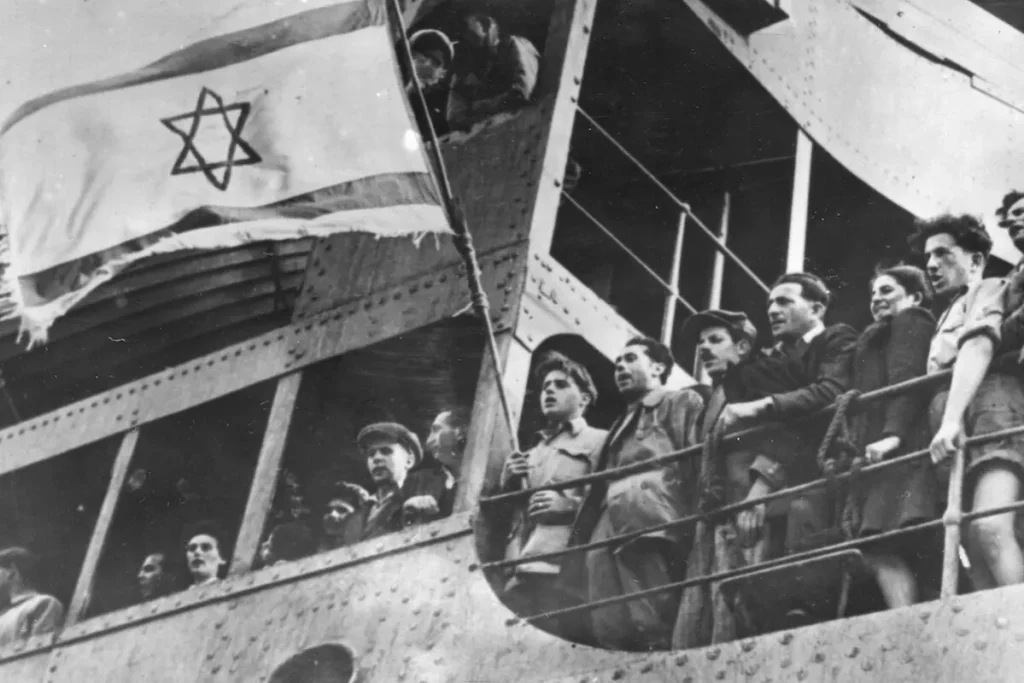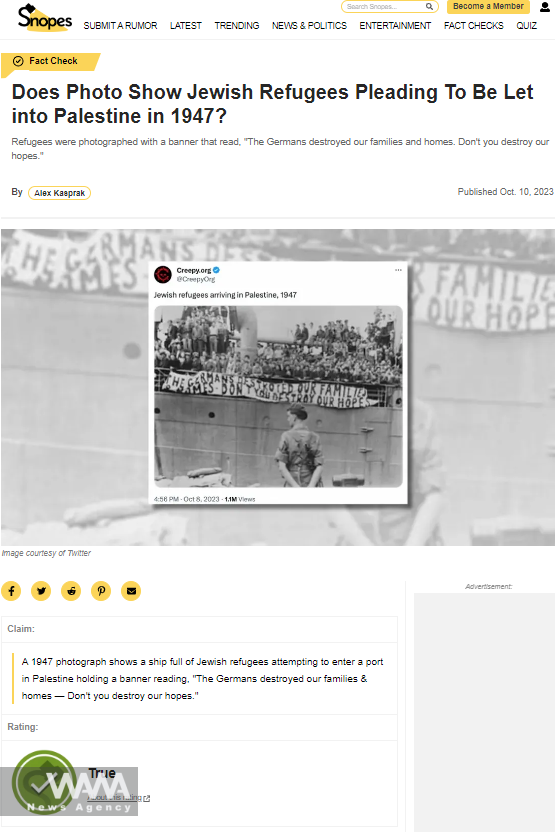Yesterday’s Refugees, Today’s Occupiers
WANA (Oct 12) – There is a historical photo that may have been forgotten over time. It depicts the ship “Exodus” in 1947, carrying over 4,500 Jewish refugees, Holocaust survivors, from Germany to the port of Haifa in Palestine.
A banner on the ship’s side reads: “The Germans destroyed our families and homes, don’t you destroy our hope.” Another striking detail in the photo is the flag held by the refugees—soon to become the official flag of the newly established state of Israel.
This image not only tells the story of a displaced people’s hope but also raises a bitter question: How did these refugees turn into occupiers of other lands?
From Holocaust Victims to Palestinian Migrants
The ship “Exodus” symbolized the Holocaust survivors’ hope for a fresh start in a safe land. After enduring the horrors of Nazi concentration camps and mass killings, many Jews sought a place to rebuild their shattered lives. The emotional messages on the ship quickly drew global attention and became a symbol of the Jewish struggle to return to Palestine.
But only a year later, with the establishment of the state of Israel and the influx of Jewish immigrants, those who had once been victims of violence and discrimination became key players in regional conflicts, leading to the occupation of Palestinian lands and the displacement of native Palestinians.
This historical contradiction forms one of the greatest political and human dilemmas of the 20th century.

From Zionism to the Founding of Israel
Behind these historical events lay the Zionist movement, which began in the late 19th century with the goal of creating a Jewish state in Palestine. The Balfour Declaration of 1917 was a turning point, as Britain expressed its support for the establishment of a national home for the Jews in Palestine.
This decision sparked ethnic and regional tensions between Jewish immigrants and the local Arab population, tensions that would persist for decades.
With the outbreak of World War II and the revelation of the Holocaust’s horrors, Jewish immigration to Palestine surged. Ships like the “Exodus” attempted to transport Jewish refugees to new lands, but British policies, controlling Palestine at the time, blocked these efforts.
The forced return of the “Exodus” ship to Europe stirred global sympathy for the Jews and increased international support for the creation of Israel. This ultimately led to the 1947 UN partition plan and the founding of Israel in 1948.
From Refugees to Occupiers: A Historical Contradiction
How a people, who were once the victims of one of history’s most brutal crimes, quickly became occupiers displacing Palestinians, remains one of history’s bitter contradictions.
The Jews who immigrated to Palestine, with the backing of international powers and Western nations, succeeded in taking over Palestinian lands and gradually solidified their role as occupiers. This process, which began with initial waves of immigration, eventually led to military conquests and widespread occupation, fueling subsequent regional conflicts.
Deep Contradictions and Ongoing Challenges
The story of the “Exodus” ship and its Jewish refugees is a symbol of the complex and contradictory history of Palestine and Israel. On one hand, a people seeking shelter and security were driven by historical and social pressures into a path that led to the occupation of another land.
On the other hand, the Palestinians, who had lived in this land for centuries, were displaced and rendered homeless. This human and historical contradiction lies at the heart of the Israeli-Palestinian conflict.
What’s important to understand is that this conflict is not just a narrative of two warring groups. It reflects a broader human issue, intertwined with themes of refuge, occupation, human rights, and justice. As such, finding a solution to this crisis requires addressing its historical, legal, and humanitarian roots.
Even today, the world witnesses the reproduction of these contradictions: yesterday’s victims who have become today’s oppressors, still engaged in struggles over the right of return and land.
The contradiction between yesterday’s refugees and today’s occupiers remains one of the most glaring puzzles of history. Can this reversal of roles be simply attributed to survival needs and the support of major powers, or is it a deeper issue that shows how power and security can perpetuate cycles of violence and discrimination?

The photograph of the “Exodus” ship, showing Jewish refugees holding the future Israeli flag, has been verified by Snopes as an authentic historical document.
If we fail to learn from history, we may continue to witness the same cycles of violence and injustice. Can a solution be found that breaks this cycle, instead building on justice and human coexistence? This remains a question that may still lack an answer, but reflecting on it is ever crucial.













